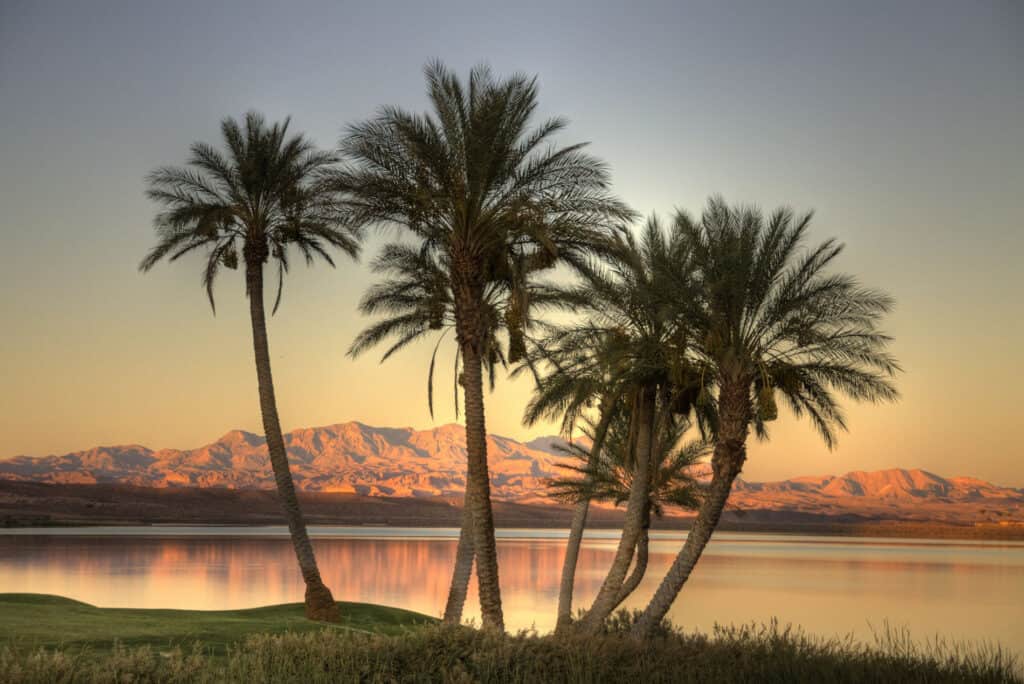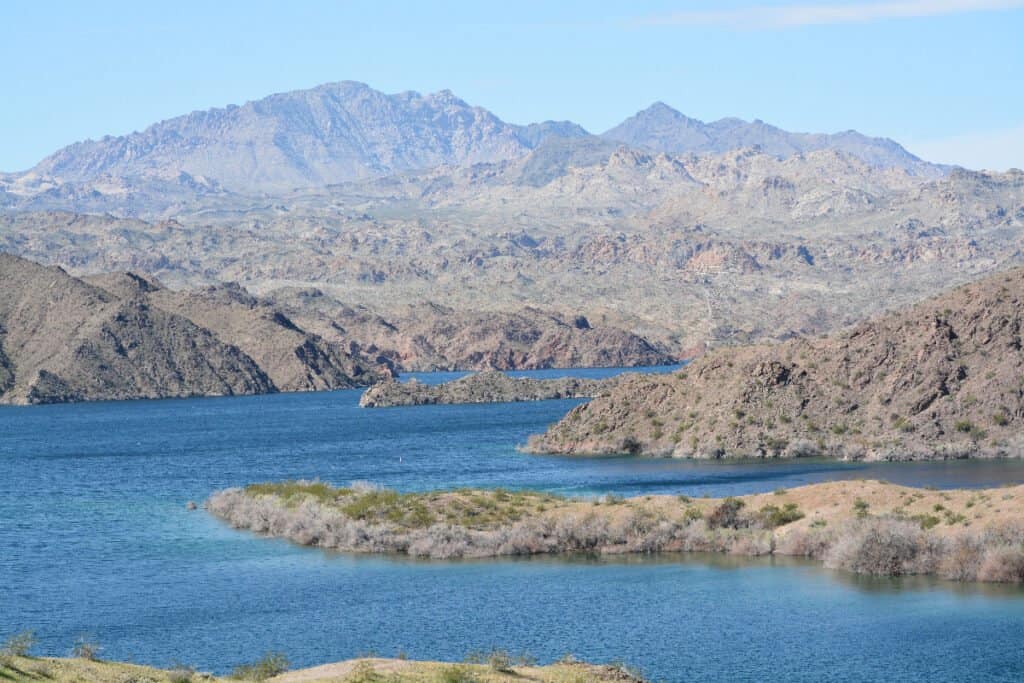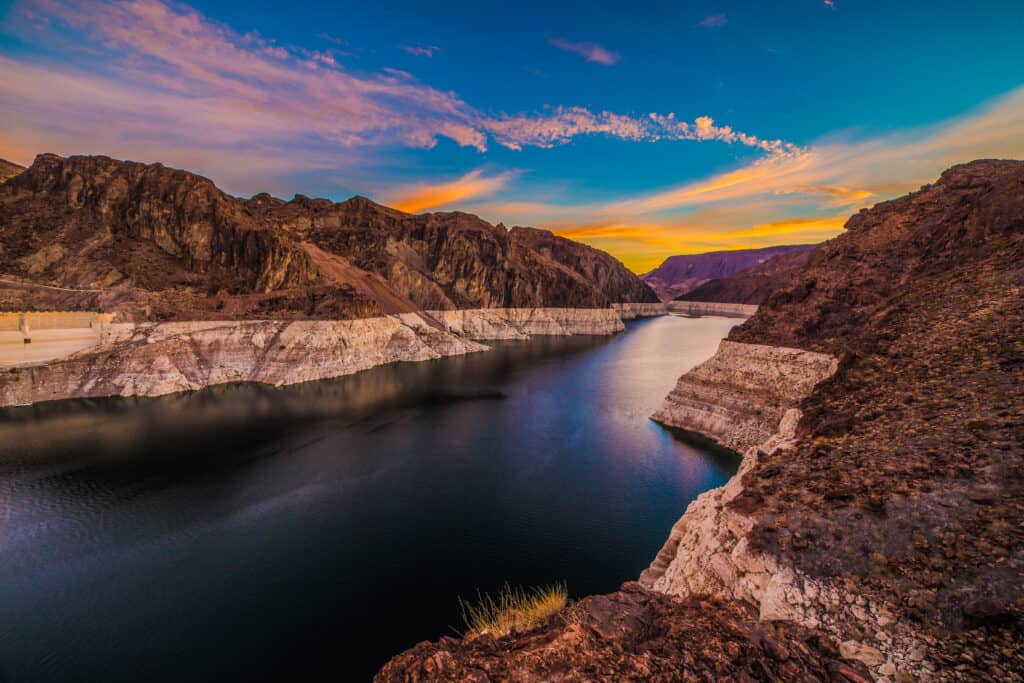For a desert state, it is surprising that the state of Nevada is well-supplied with lakes. Most people quickly conjure up images of casinos, desert, and mining when they think of the state of Nevada. But the seventh-largest state in the United States is so much more. Nevada is divided into forests, valleys, and rivers by mountains. Some are reservoirs, while others are lakes in beautiful deserts or alpine environments.
In Nevada, most bodies of water are conveniently located, and some even have developed communities with excellent lodging options nearby. However, in Las Vegas, there aren’t too many options, and the biggest of them lie in Nevada’s Clark County. This article will discuss the biggest, best, and most well-known lakes accessible and near Las Vegas, Nevada. So, if you ever find yourself in the middle of Sin City and looking for a refreshing turn of events, read on for the biggest and best lakes you can go to.

The 3 Biggest (and Best) Lakes Near Las Vegas, Nevada
3. Lake Las Vegas

Lake Las Vegas is not in Vegas.
©iStock.com/CelineMichelle
Have you heard about Vegas’ other artificial body of water, aside from Lake Mead? In Clark County, Henderson, a 320-acre (130 hectares) reservoir and a 3,592-acre (1,454 ha) built area are collectively called Lake Las Vegas. The water volume of Lake Las Vegas is 10,000 acre-feet of water. Hotels, homes, condos, shops, and a stunning golf course surround the lake. Imagine it as the more glitzy cousin of Vegas that first-time visitors do not overrun. Additionally, there is a lot of flora, giving the impression that you are in another state. As funny as that sounds, Lake Las Vegas isn’t even in Vegas! It’s in the nearby city of Henderson. Its distance from the Strip is only 25 minutes away, so don’t worry about that. The road’s area is largely undeveloped, making the trip to the mountains serene.
With its extensive selection of water sports activities, Lake Las Vegas kicks things up a notch. You may rent pedal boats, kayaks, and paddle boards to begin with. Flyboarding and using a water-propelled jetpack are great activities for thrill-seekers.
Those who enjoy being outside will enjoy Lake Las Vegas. Numerous hiking trails exist in addition to the stunning lake to help you get in touch with nature. Visitors will adore the variety of options available to them. Over 184 miles of off-site trails may be found in Henderson. They have Nevada’s largest trail network as well, and you can even get to Lake Mead from Lake Las Vegas. The Clark County Wetlands Park is another amazing location that is close by, teeming with desert flora, fauna, and wildlife, including jackrabbits, coyotes, and desert tortoises.
2. Lake Mohave

Striped bass is the primary sport fish in Lake Mohave.
©Norm Lane/Shutterstock.com
If you are looking for a larger lake to complete your vacation, Lake Mohave is just over an hour away from Las Vegas but in an entirely different world. The border between Nevada and Arizona is marked by the Lake Mohave reservoir, located downstream of the Hoover Dam. The lake is impressive due to its 26,500 acres of surface area, 75 feet (23 meters) depth, and 199,500 acre-feet of water volume. The lake’s main freshwater species are the rainbow trout, striped bass, largemouth, smallmouth, channel catfish, crappie, common carp, and sunfish. The razorback sucker and the bonytail chub, two endangered native fish species, are also found in the lake.
The lake is 67 miles long and has more than 200 miles of shoreline, making it rather “thin” at its narrowest point of only around 4 miles. The entire 22 miles of the lake, formed from tiny canyons, are exciting to explore and offer opportunities to reconnect with nature. As Lake Mead’s shallowest waters flow over the Hoover Dam, the water becomes icy. In comparison to Lake Mead, Lake Mohave is smaller and shallower.
In Lake Mohave, striped bass has become the primary sport fish. This species breeds in the reservoir’s seasonally warm regions, migrates into colder waters as it becomes larger, and eventually feeds on other fish. The sport fishery’s remaining section comprises channel catfish, largemouth bass, smallmouth bass, and sunfish. Threadfin shad, green sunfish, bluegill, and crayfish are the main forage species in the area.
1. Lake Mead

Lake Mead is the largest lake in Nevada and the largest man-made lake in the United States.
©fellswaymedia/Shutterstock.com
With a surface size of 247 square miles and a length of 112 miles, Lake Mead is the largest lake in Nevada and the largest man-made lake in the United States. It contains a staggering 26,134,000 acre-feet of water volume, a 532-foot widest point, and a shoreline that stretches for up to 759 miles. It, therefore, comes as no surprise at all that it is also one of the largest artificial lakes in the world.
Lake Mead was created at the Arizona-Nevada border when the renowned Hoover Dam in the Colorado River was dammed. The reservoir was created in 1936 to offer hydroelectric power, water supply, leisure activities, and various fauna habitats. It is one of the lakes in the state and the nation that is most worth visiting, but it is also one of the most snake-infested. The recreation area is home to four species of rattlesnakes, all of which are considered dangerous.
While Lake Mead is the largest reservoir in the United States in terms of capacity, due to the ongoing drought in Arizona, Nevada, and California, it rarely fills up. The last time Lake Mead reached its full capacity was in 1983, despite the fact that it supplies water to nearly 20 million people in the surrounding states. Lake Mead typically has about 40% of its capacity available.
Nevertheless, despite having the biggest water storage capacity of any lake in the US, Lake Mead has been declining since 1983 and reached record low water levels from 2010 to the present because of the drought and rising water demand in California and the southern states. In reality, Lake Mead had 10.4 million acre-feet of water in July 2019, just about 40% full. However, as long as the Colorado River gets a sizable amount of water from runoff from the Rocky Mountains, the lake is unlikely to vanish very soon. However, in the years to come, the lake’s size may decline even further due to climate change uncertainty.
Summary of the 3 Biggest (and Best) Lakes Near Las Vegas, Nevada
| Rank | Lake Name | Size |
|---|---|---|
| 1 | Lake Mead | Surface area of 247 square miles. Water volume of 26,134,000 acre-feet |
| 2 | Lake Mohave | Surface area of 26,500 acres. Water volume of 199,500 acre-feet |
| 3 | Lake Las Vegas | Surface area of 320 acres. Water volume of 10,000 acre-feet |
The photo featured at the top of this post is © CrackerClips Stock Media/Shutterstock.com
Thank you for reading! Have some feedback for us? Contact the AZ Animals editorial team.






